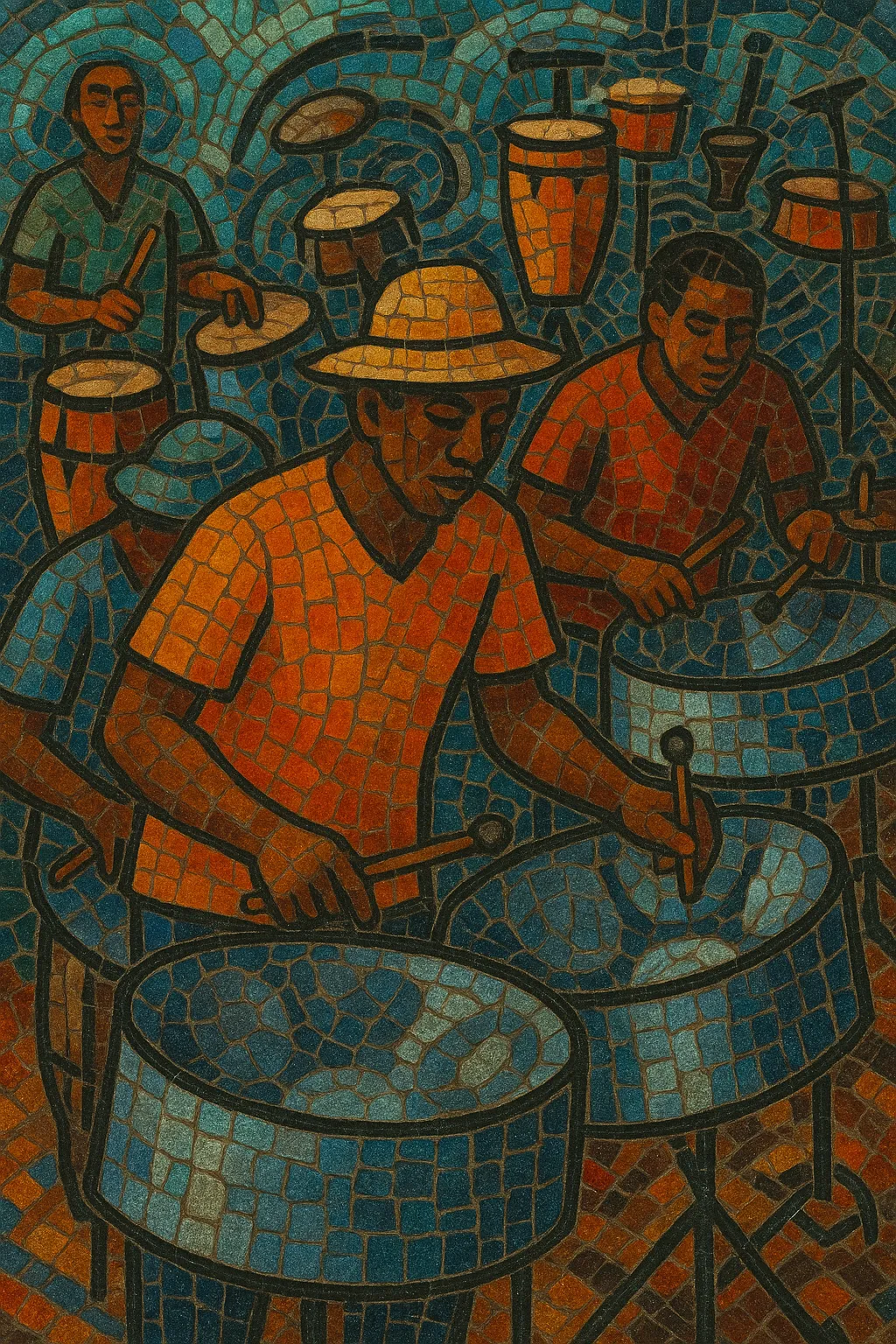Steel band is an ensemble style centered on the steelpan (often called "steel drum"), a tuned idiophone crafted from 55-gallon oil drums. It originated in Trinidad and Tobago and is closely tied to Carnival culture.
A typical steel band features sections of different pans fulfilling orchestral roles: tenor/lead pans for melody, double seconds and guitars for harmony and counterlines, cellos for inner voices, and six–ten bass pans for low-end. An "engine room" of brake irons, drum kit, congas, cowbells, and shakers drives the groove. Repertoire spans calypso and soca to classical transcriptions and jazz arrangements, all rendered with the instrument’s bright, bell-like timbre.
Steel band emerged in Trinidad and Tobago during the late 1930s and early 1940s from Carnival street music traditions, evolving out of tamboo bamboo (percussion ensembles using bamboo stamping tubes) and found-metal percussion. During World War II, bans on traditional drums encouraged experimentation with metal containers and oil drums, leading to the discovery that carefully hammered and tuned drum surfaces could produce fixed pitches.
Pioneers such as Ellie Mannette, Winston "Spree" Simon, and Tony Williams refined tuning, note layout, and instrument crafting techniques, establishing families of pans that could cover the full orchestral range. In 1951, TASPO (Trinidad All Steel Percussion Orchestra) traveled to the Festival of Britain, introducing steel band to international audiences and catalyzing global interest.
Steel bands grew into large orchestras with highly organized sections and sophisticated arrangements. Panorama, the annual national competition launched in the 1960s, became the ultimate showcase for arrangers and bands, driving rapid advances in technique, harmony, and ensemble precision. Arrangers like Jit Samaroo and Clive Bradley popularized symphonic development within calypso/soca forms.
Steel bands spread across the Caribbean diaspora and beyond, thriving in the UK, North America, Japan, and Europe. University and community steel bands institutionalized pan education, while makers optimized tuning stability and acoustics. Modern repertoires mix calypso/soca, jazz, classical, film themes, and original works, and amplification has enabled larger venues and outdoor parades. Today, steel band stands as both a national symbol of Trinidad and Tobago and a versatile global ensemble tradition.


